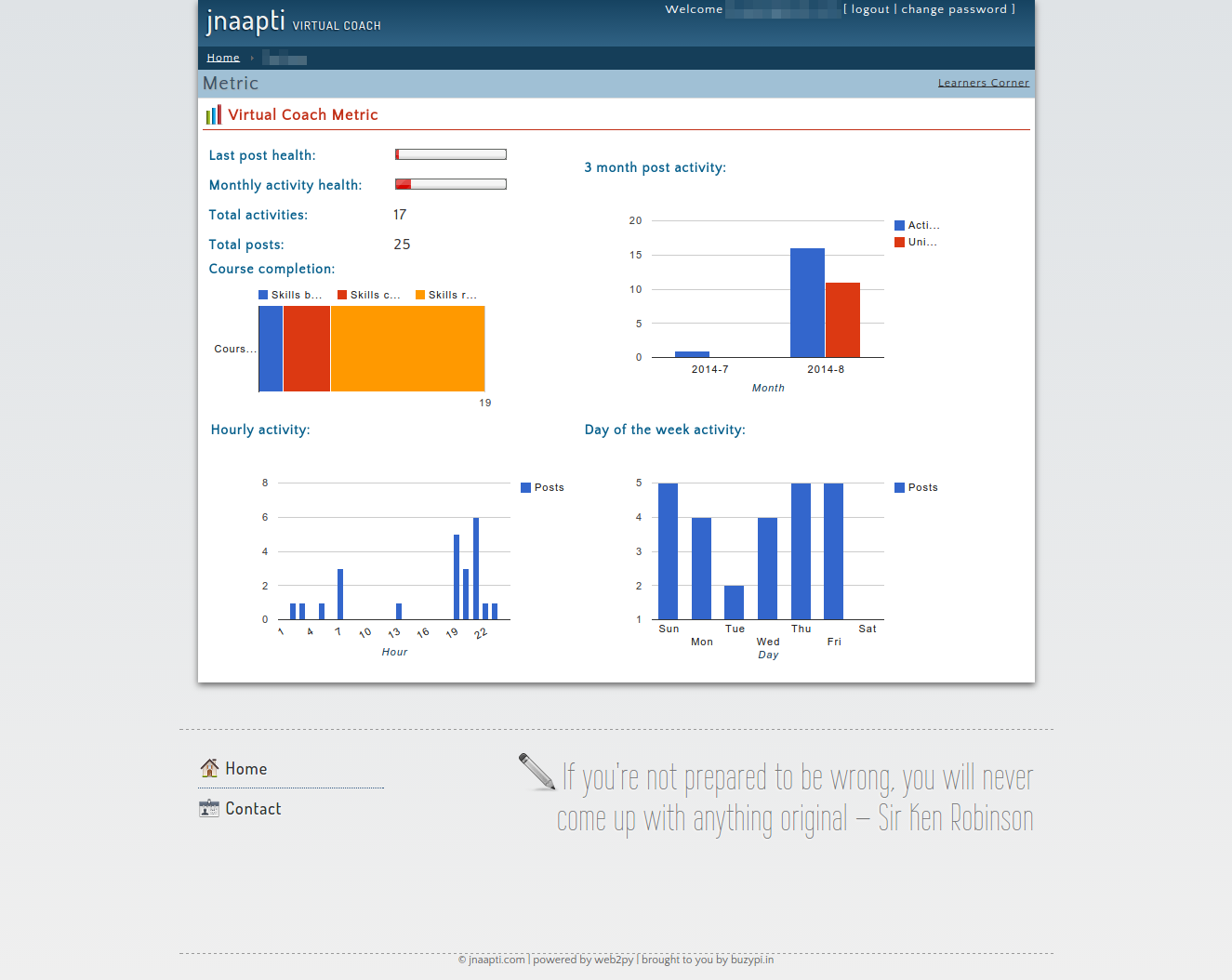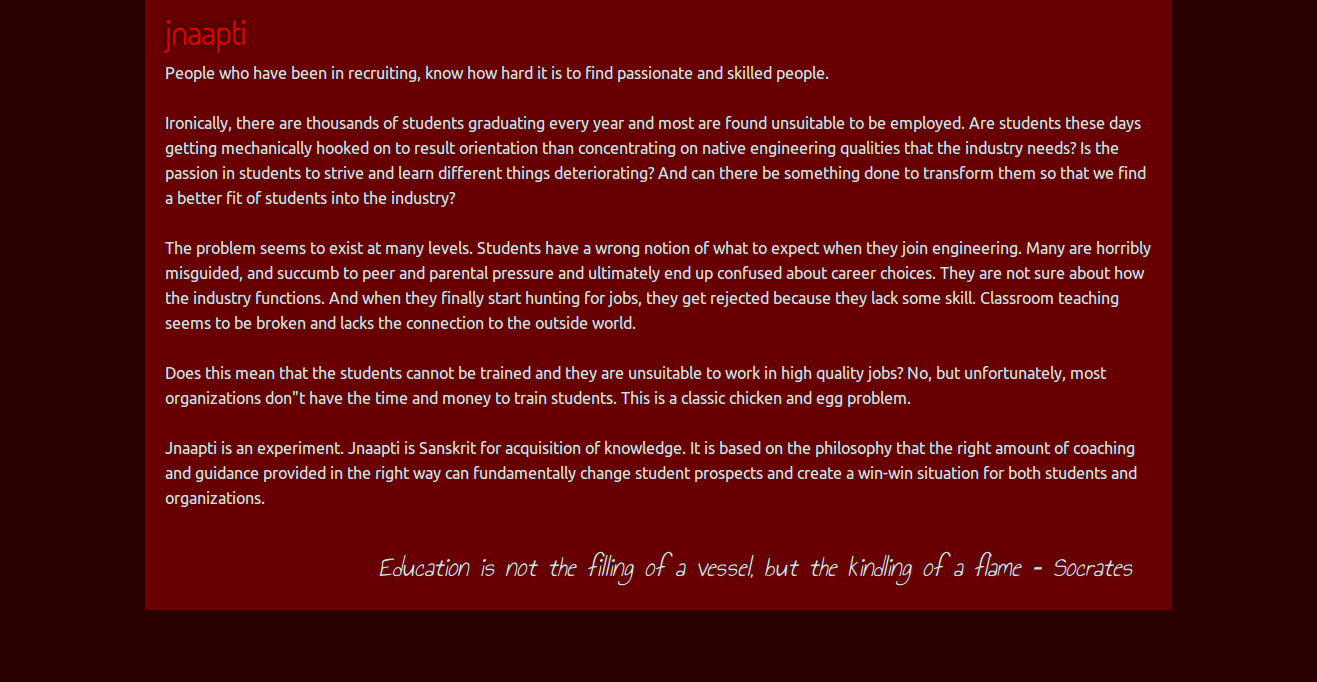Jnaapti has conducted training in over 30 companies in over 30 technologies in the last 6 years. We are the proud technology training partners to some of the best minds in the industry. Our training programs have been attended by employees of organizations like VMware, Akamai, Citrix, Ericsson, Practo, SAP Labs etc. We have trained people in organizations of varied sizes (startups, SMBs, MNCs) and with varied experience levels – freshers to people with over 20 years experience in the industry.
Our youngest student is 6 years old and our oldest student is a retired doctor who was building his own startup. Professionals that we have trained play various roles in organizations; we have trained software developers, architects, test engineers, system administrators, database administrators, Devops engineers, performance engineers, full-stack developers, sales people and engineering managers.
Our vision is to be able to teach anything to anyone starting from anywhere. With this in mind, we have evolved a carefully thought through training process which caters to organizations of different sizes and varied training needs.
jnaapti’s 4 step approach to training
Learning Objectives
When companies plan for a training, they have various objectives in mind. Sometimes, the training is planned to meet organizational learning goals, sometimes for project specific needs, sometimes for anticipated project needs or sometimes for employee motivation. The way a training is delivered depends on these objectives.
The experience level of the target audience differs. People may be learning the same technology, but they have very diverse backgrounds. The way you teach a learner fresh out of college is different from an architect who has 10 years of experience in the industry. To a fresher, you need to relate more to the concepts that they have learnt in their curriculum and why these technologies exist and what to expect from each. To an experienced person, you need to be able to relate to the technologies they already know and what they are learning now. The way you teach MongoDB to a DBA who has worked in Relational Database technology all his career is very different from a fresher who will perhaps find MongoDB more natural than a relational database!
Continue reading “The Jnaapti Journey – Helping Companies Succeed”


